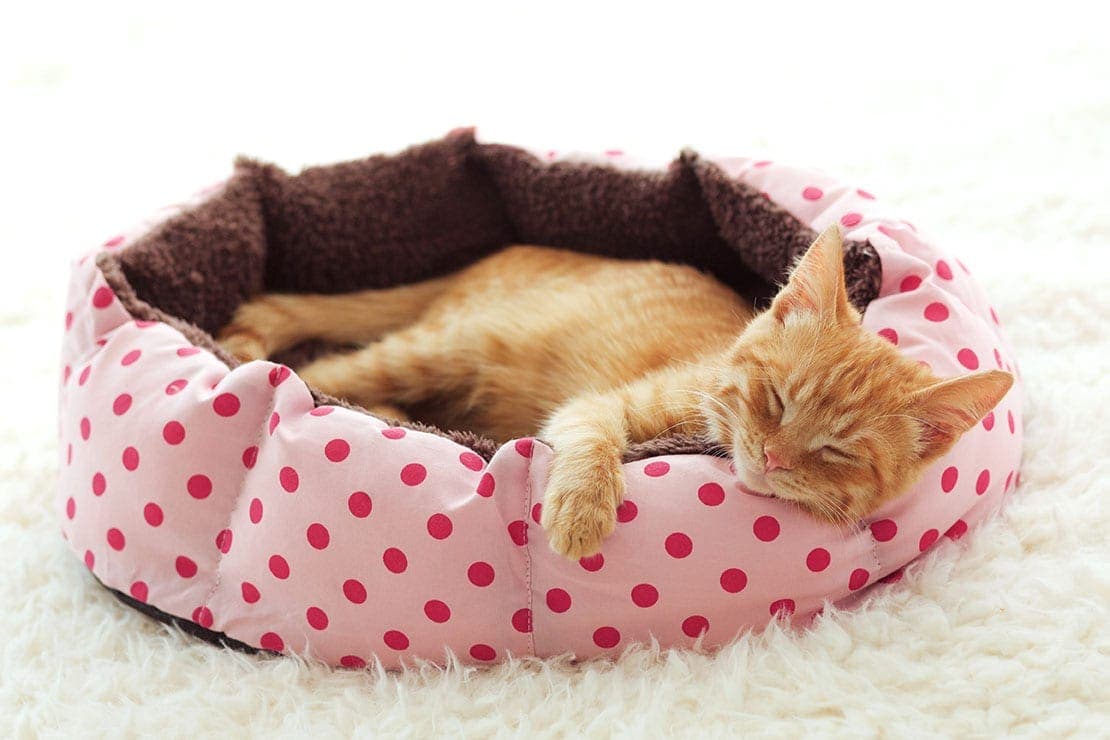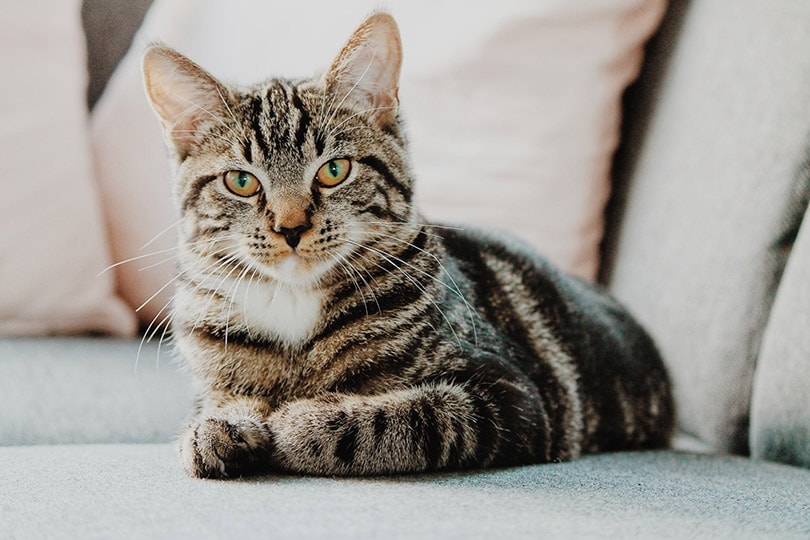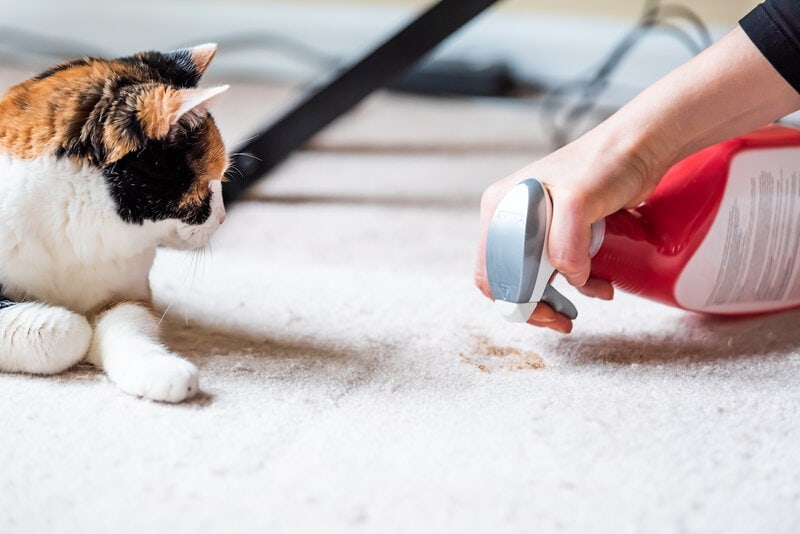If you have pets, you know that they spend a lot of time in their ped. If they like to lay on a blanket or a towel, it’s pretty easy to keep them clean and to smell fresh, but if you get them a commercial bed with sides, the upkeep can be a challenging and time-consuming task. If not properly maintained, the bed can become dirty from oils on your pet’s fur, and it can also begin to smell bad, especially when it’s humid and if your pet spends time outside, a dirty bed can provide a place for fleas to hide and spread to any other pets you have. If you would like some tips on keeping your dog or cats’ bed clean, keep reading while we give you step-by-step instructions to do just that.
Cleaning your cat’s bed
Shake it out
The first step in cleaning your pet bed is taking it outside and shaking it to remove any loose particles and hair. If you have a small stick, you can gently tap the back of the bed to remove even more hair. While you are doing this, be mindful of where the particles are going, especially if you have a swimming pool nearby.
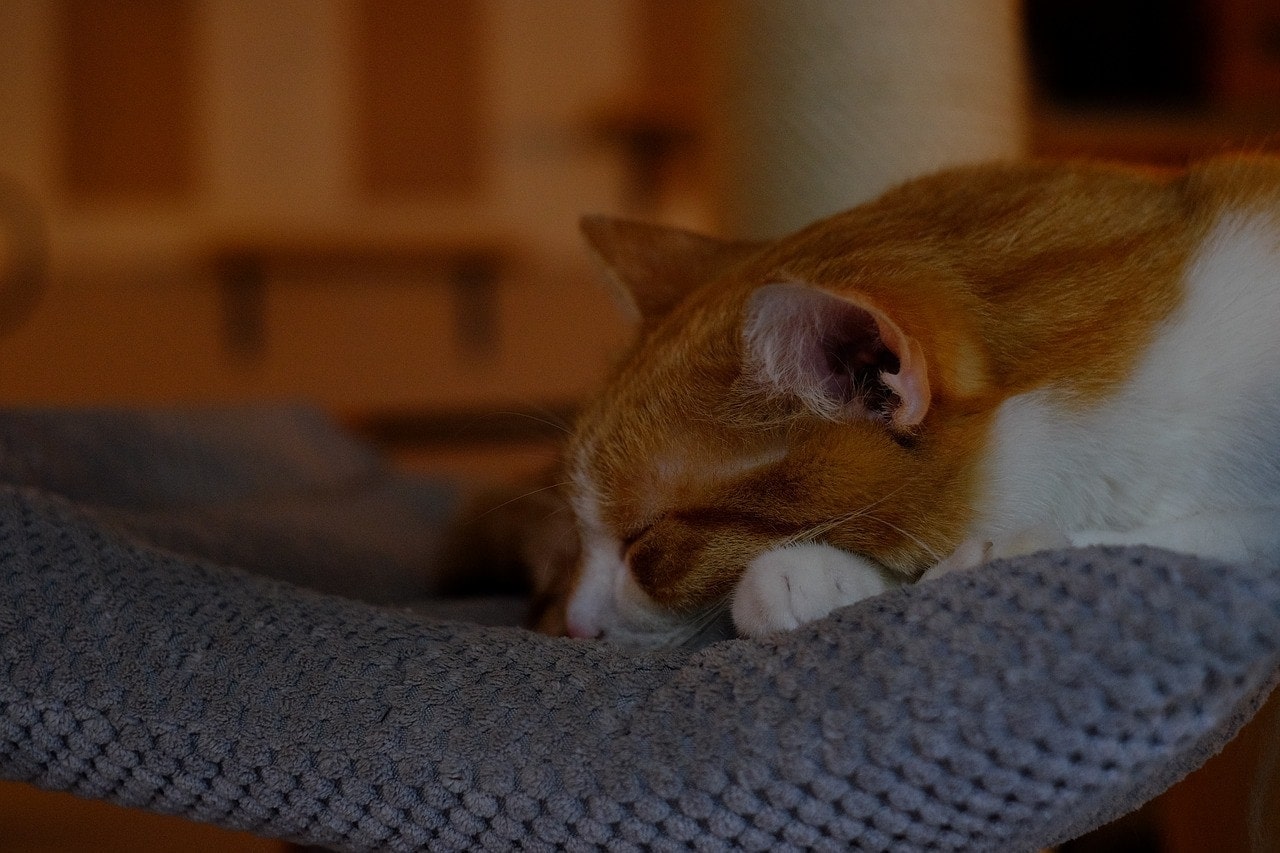
Let it sit in the sun
If it’s summertime and the bed is not too dirty, or you regularly perform these steps to keep it clean, you may not need to go any further than knocking out the dust and fur before letting it sit in the sun for a few hours. Strong sunlight will kill any molds or mildew that might be rowing on the bed. It will smell fresh and clean without the need for commercial scents, especially on a windy day.
Machine wash
Dogs and cats produce oils on their skin that can rub off onto the bed while they sleep. Some dog breeds, like the Basset Hound, German Sheppard, Irish Setter, and Golden Retriever, can produce more oils than other species. Hairless cat breeds, like the Bambino, Peterbald, and Sphinx, can produce excess oils that that rub off easily onto the bed. The best way to remove these oils is to put the bed through a cycle in the washing machine. It’s important to plan ahead and purchase a bed that is machine washable so you can complete this step.
It’s important to use a laundry detergent that doesn’t contain any dyes or fragrances that could irritate your pet’s skin. There are several brands available for sensitive skin that would be perfect. If you suspect that there may be fleas in the bed, let it sit in hot water for several hours before finishing the load. Adding a cup of white vinegar to the rinse cycle can also help to combat fleas.
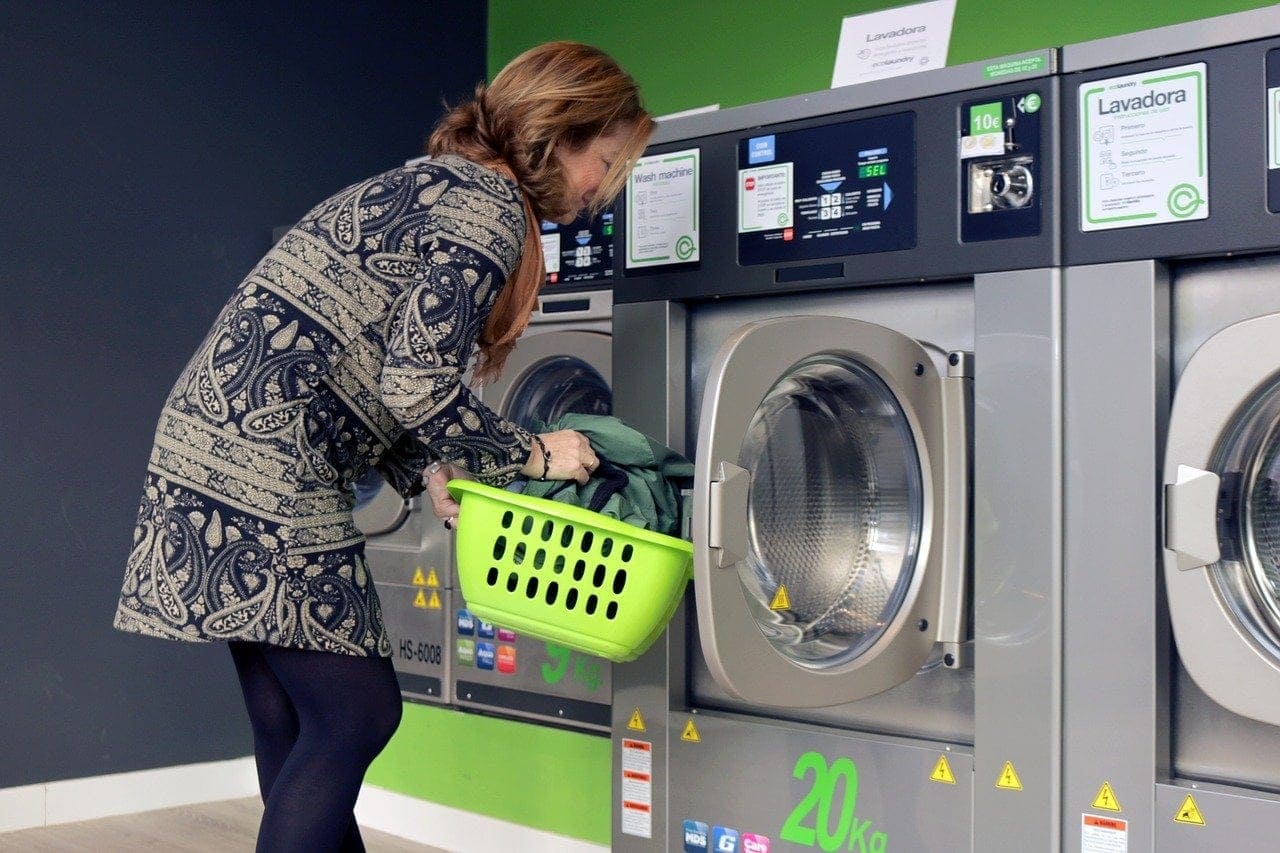
Hand wash
If you already own the pet bed and it is not machine washable, you’ll need to wash it by hand in a tub or basin. We recommend getting the water as hot as possible. Use rubber gloves if necessary, to get the water temperature higher. Use a small amount of pet-safe detergent or liquid dishwashing soap like Dawn to help break up the oils from your pet’s skin. If you think your pet might have fleas, a small amount of flea and tick shampoo can help remove them.
Regular maintenance
Vacuum
Frequently vacuuming your pet’s bed can help keep it clean in-between washes. Vacuuming can help reduce hair and small particles that can allow mold or mildew to grow. The Shop-Vac style vacuum works best, but handheld vacuums also work well for removing hair and other small particles.
Related Read: 6 Best Vacuum Cleaners For Cat Litter in 2021
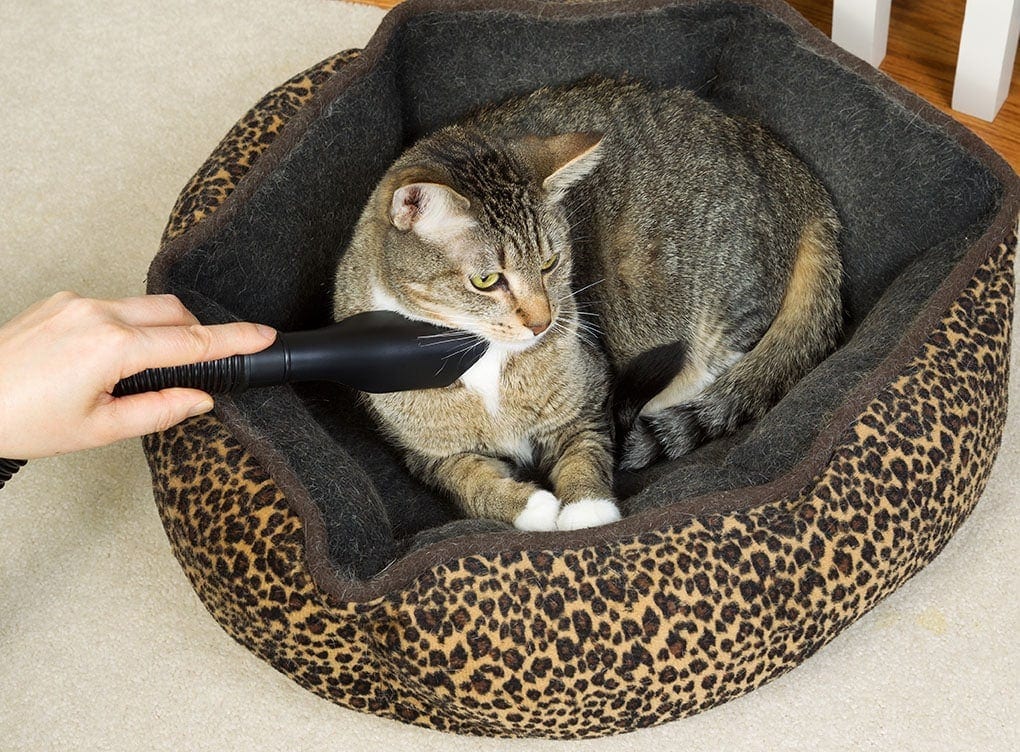
Lint roller
A lint roller or some duct tape wrapped backward around your hand is another great way to remove hair and other small particles from your pet’s bed in between washings.
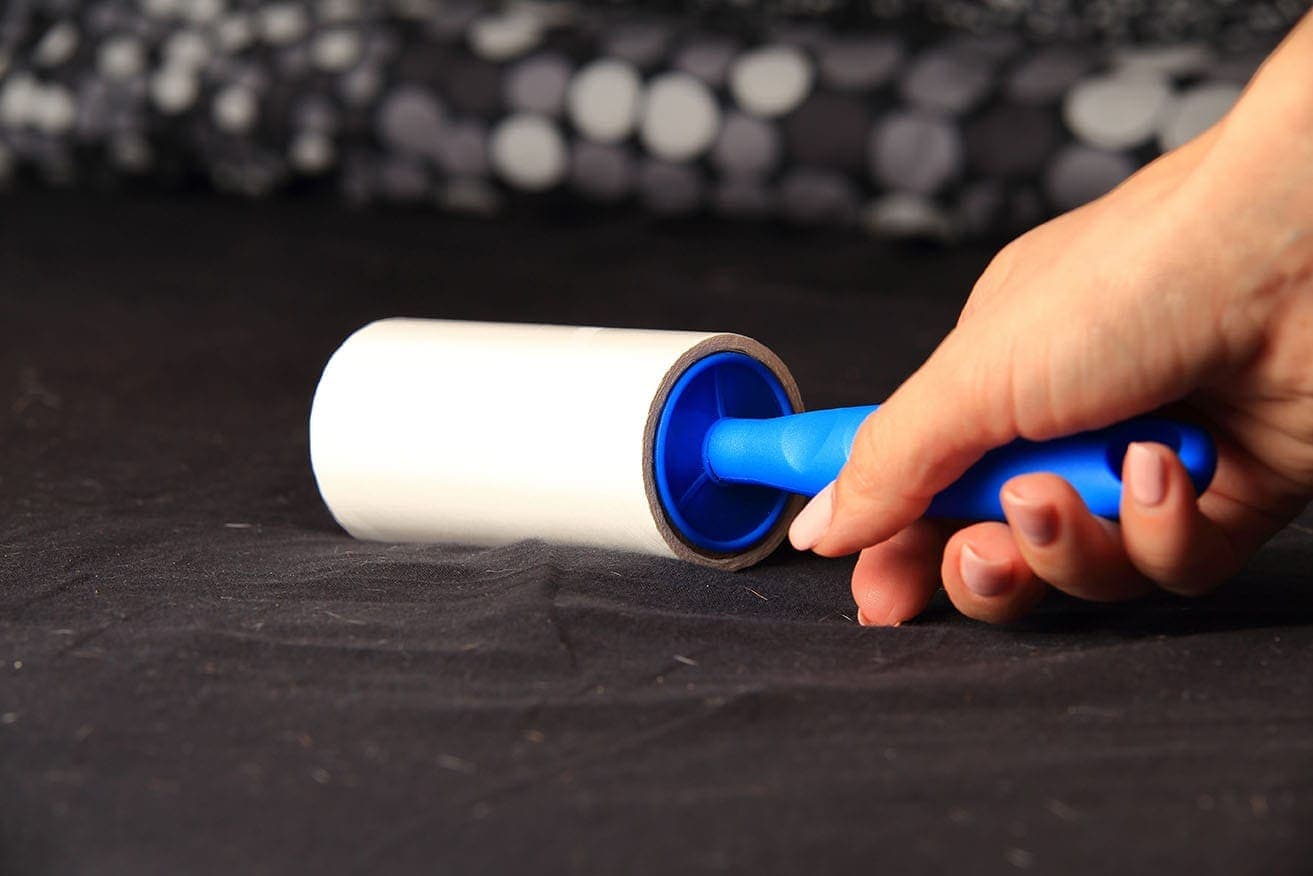
Baking soda
Baking soda is a powerful odor neutralizer that can help reduce pet scents. We recommend sprinkling some over your pet’s bed and allowing it to sit for an hour or two before using a vacuum to remove it.

Bath
Occasionally bathing your pet using a pet-safe shampoo can reduce the hair and oils coming off your pet. However, you need to take care not to wash your pet too often or dry the skin out, causing additional scratching and shedding. We recommend bathing your pet no more than once every six to eight weeks.
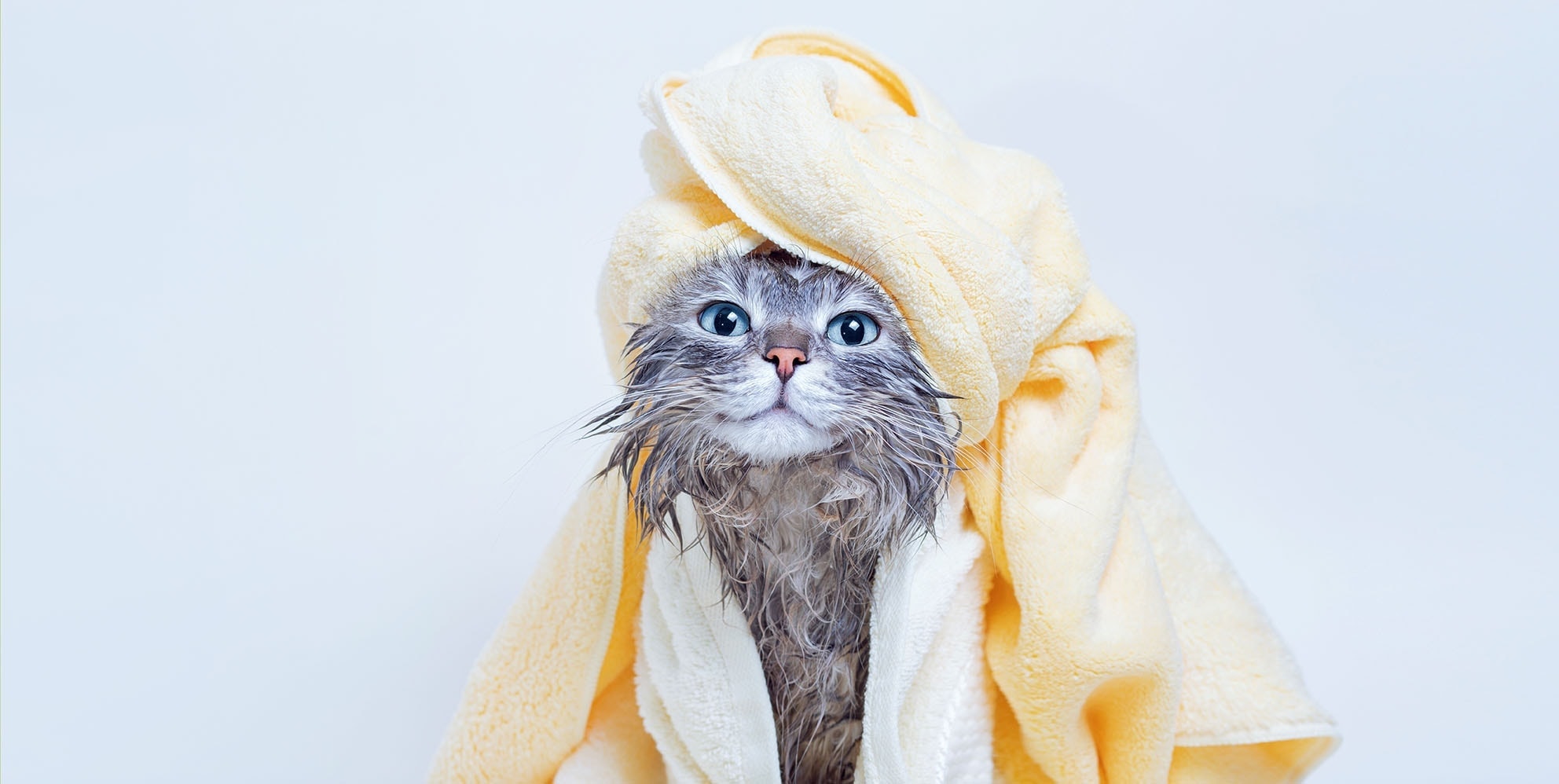
What should I avoid?
When cleaning your pet’s bed, you should avoid using any detergents that contain harmful chemicals or fragrances. These chemicals can irritate and dry the skin, which can cause excessive scratching and more shedding, adding additional hair to your home. You should also avoid using any essential oils, as many of them are harmful to cats and dogs and can damage your pet’s liver.
Summary
Machine washing your pet’s bed is likely the best way to get it clean. It’s also the easiest method, so remember to purchase a machine washable bed. The other tips on this list will work well to maintain it in between washes. We’ve found that letting a small amount of baking soda sit for an hour or so before vacuuming can help keep the bed clean and odor-free, so you will not need to wash it very often or bath your pet unless it gets into something.
We hope you have enjoyed reading over this guide and learned some new tricks. If we have helped improve your pet’s sleeping conditions, please share this step-by-step tutorial about cleaning your dog or cat’s bed on Facebook and Twitter.
Featured Image Credit: Alena Ozerova, Shutterstock
